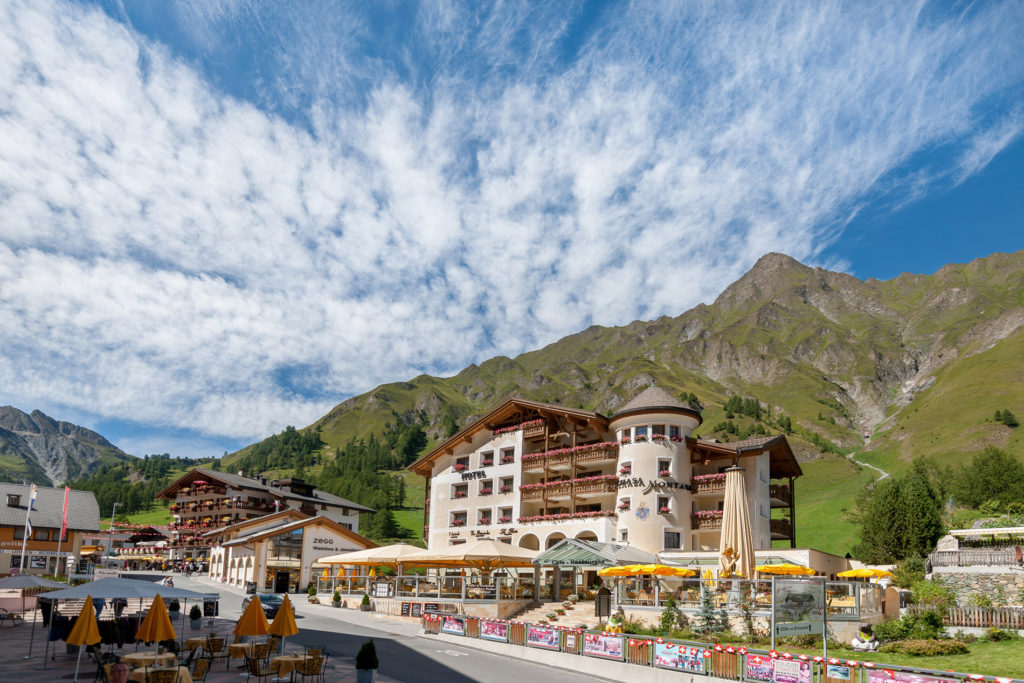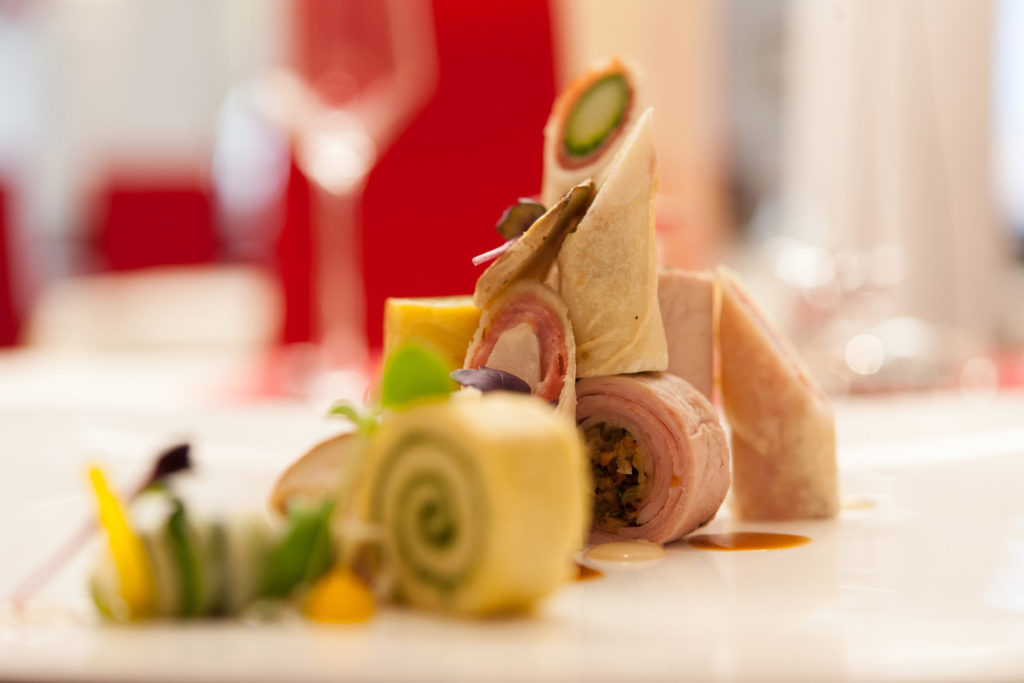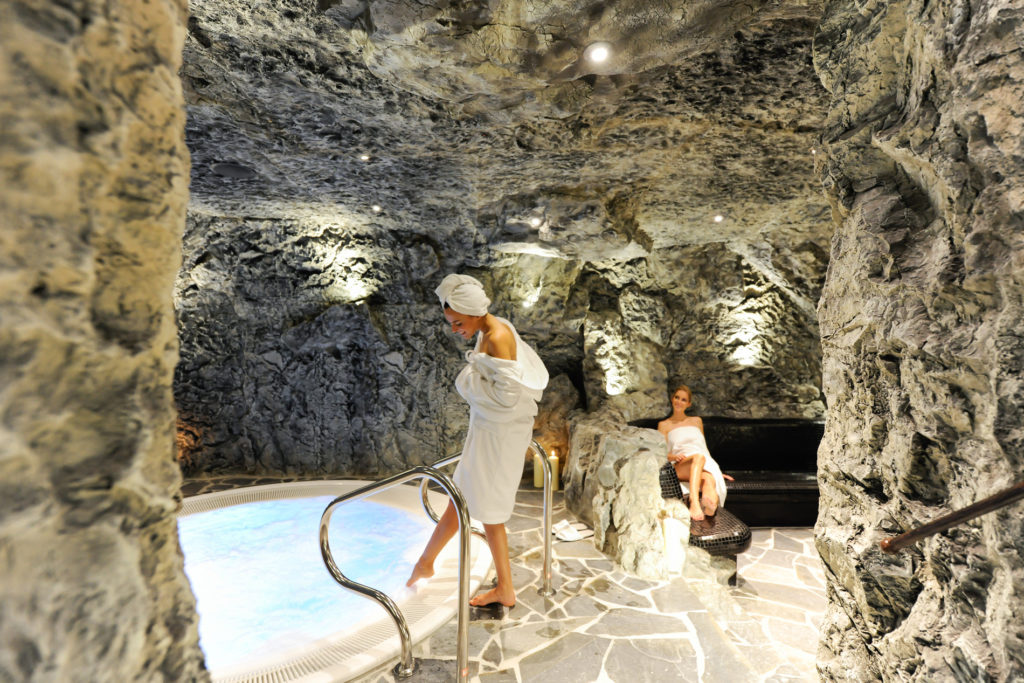Summer trip between the Upper and Lower Engadine to discover the Route du Bonheur. On the menu: walnut pies, sgraffito, hiking and a crash course in Romansh.
Text: Eileen Hofer
After the Vereina railway tunnel, we’re catapulted into Graubünden for a 5-day trip along the Route du Bonheur. The road trip is orchestrated by the Relais & Châteaux group and combines a selection of gastronomic and hotel addresses between the Upper and Lower Engadine.
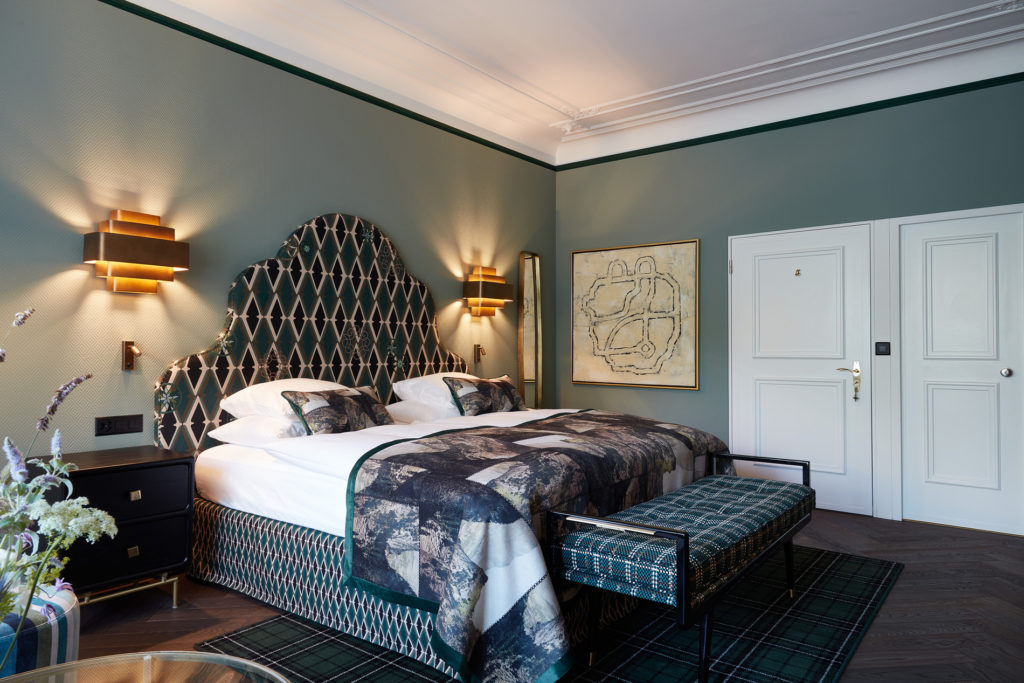
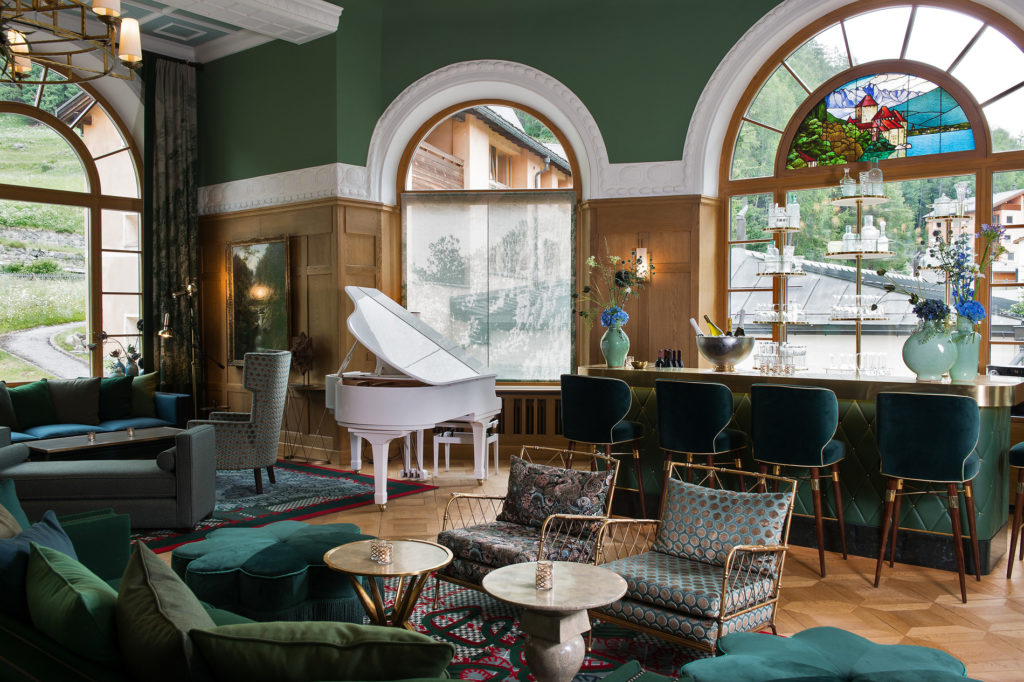
In the heart of the Bernina Valley, surrounded by forests of arolla trees, Pontresina peeks out. The silhouette of a feudal castle rises up with its turrets. The Hotel Walther will be your first stop. “Allegra e bainvgnieu!” Anne-Rose Walther, the owner, greets us in Romansh. After a break in the 600 m2 “Aqua Viva” wellness area, we sip a prosecco in the renovated lounge. Built in 1907, the Belle Époque-style palace combines Jugenstil floral motifs with historic Heimatstil stained-glass windows. Dinner is served at the Gondolezza restaurant. In the middle of the garden, the cabin of a cable car was bought on eBay. It used to provide access to the Diavolezza mountain refuge at an altitude of 3,000 meters. Today, the pans are smoking in a rustic setting.
At the foot of the Walther Hotel, 580 kilometers of hiking trails criss-cross the mountain. A funicular takes us to Muottas Muragl. Here, snow-capped mountains are called Piz. Faced with this panoramic view of the Upper Engadine lake plateau, one imagines the Italian painter Giovanni Segantini (1858-1899) sketching these shimmering colors. The eponymous 79 km trail takes you to the viewpoints that inspired him.
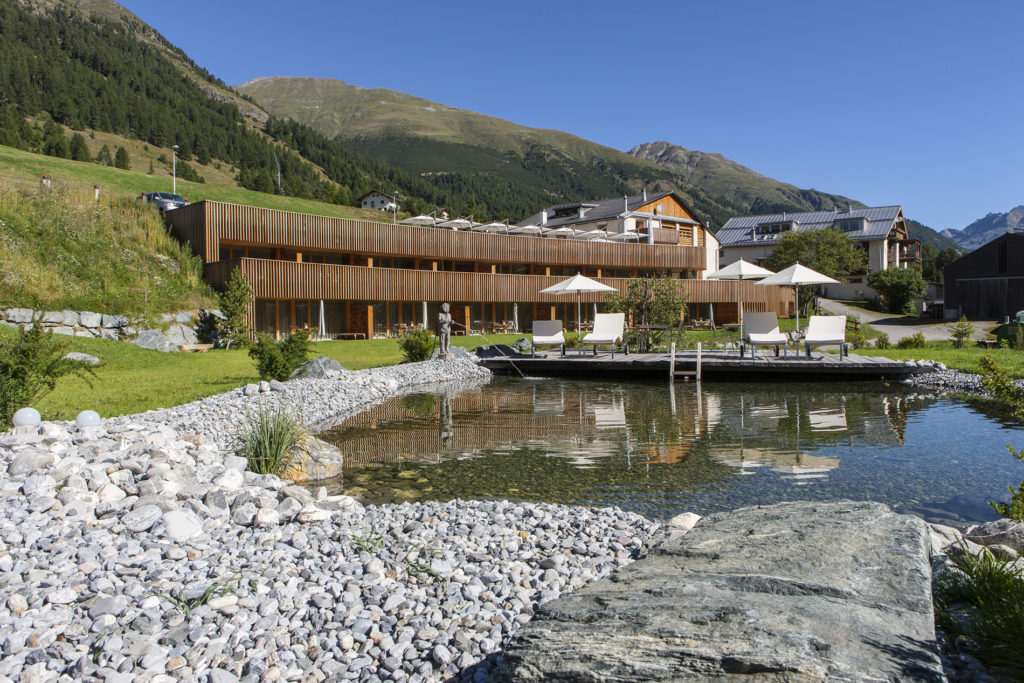
Arolla, the essence of the region
In Brail, a hamlet of 100 inhabitants that serves as the border between the Upper and Lower Engadine, In Lain Cadenau is Switzerland’s smallest five-star hotel with 14 suites. Here, pine is king, from the furniture to the plates and the woodwork on the walls. An ultra-modern annex has been added to the original 450-year-old farmhouse. Its rounded shape hugs the hillside, with a garden overlooking the wood-heated sauna and jacuzzi, which guests are quick to reserve.
Michelin-starred chef Dario Cadonau is at the helm of all three restaurants: the gourmet Vivanda, the Käserei and La Stüvetta. As an aperitif, champagne is sweetened with arole syrup, while Grisons Angus beef entrecôte is smoked in its pine belt. For dessert, the infusion of this forest plant is enjoyed iced.
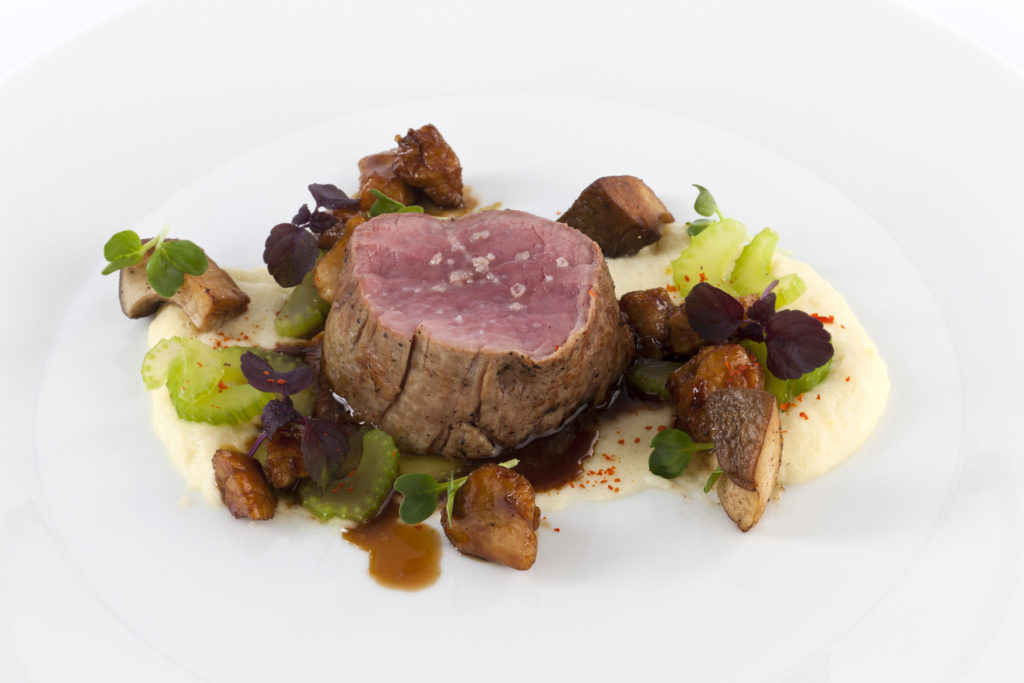
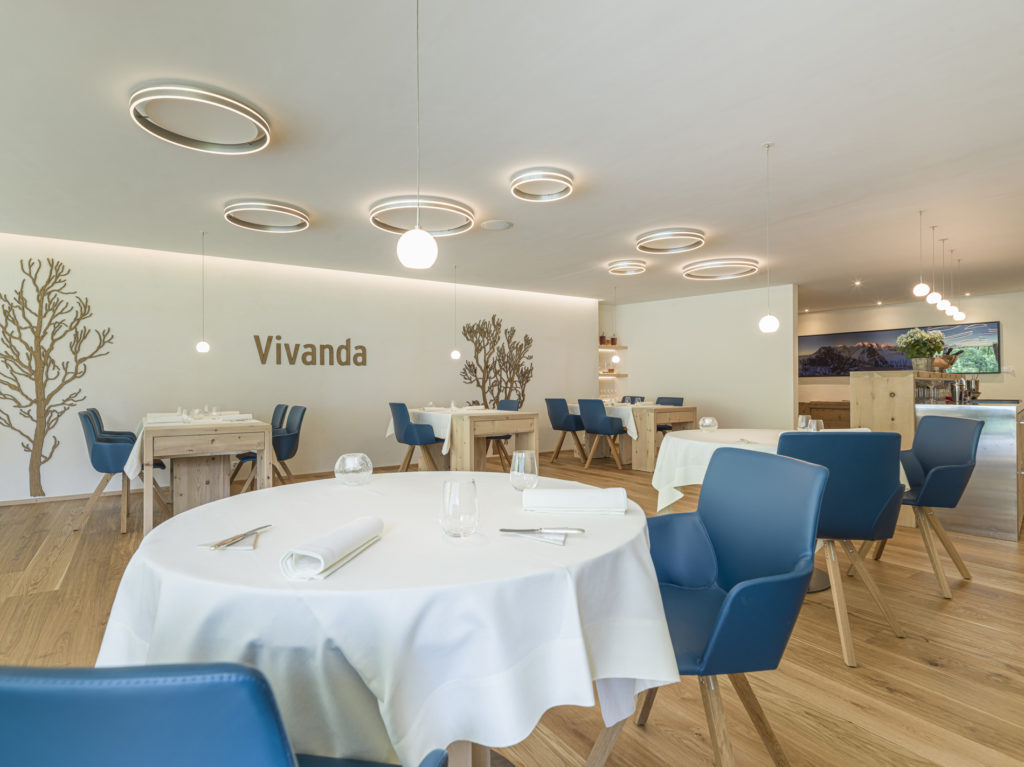
Tarasp Castle, emblem of the Engadine
Day 3. A compulsory stop at the Zernez Swiss National Park. The ibex, reintroduced in 1934, is one of the 38 mammal species that can be seen on a hike. Then on to Tarasp Castle. At the beginning of the 20th century, it was purchased by philanthropist Karl August Lingner, who restored the Lower Engadine landmark, complete with Tyrolean hangings and Murano stained-glass windows. Sadly, he died two months before the work was completed. Since then, the castle has been owned by Engadine artist Not Vital, who has turned it into an art center. The entire second floor is open to the public.
Gian-Andrea Pazeller and his parents welcome us to the old family farmhouse built at the foot of the castle 400 years ago. The façade of the Chastè hotel and restaurant is adorned with sgraffito. These murals are “scratched”, creating a play of light and shadow around the windows. The grandfather, Robert Pazeller, juggled two jobs: farmer and concierge at the Saint-Moritz palace. A black-and-white photo shows him conversing with Alfred Hitchcock. The Chastè’s ovens are home to Engadine specialties such as Plain in Pigna, baked rösti, Alexander Maria Lohmann Alexander Maria Lohmann Alexander Maria Lohmann DR chamois salsiz, marmot stew and walnut pie, a local specialty even though walnuts don’t grow in Graubünden.

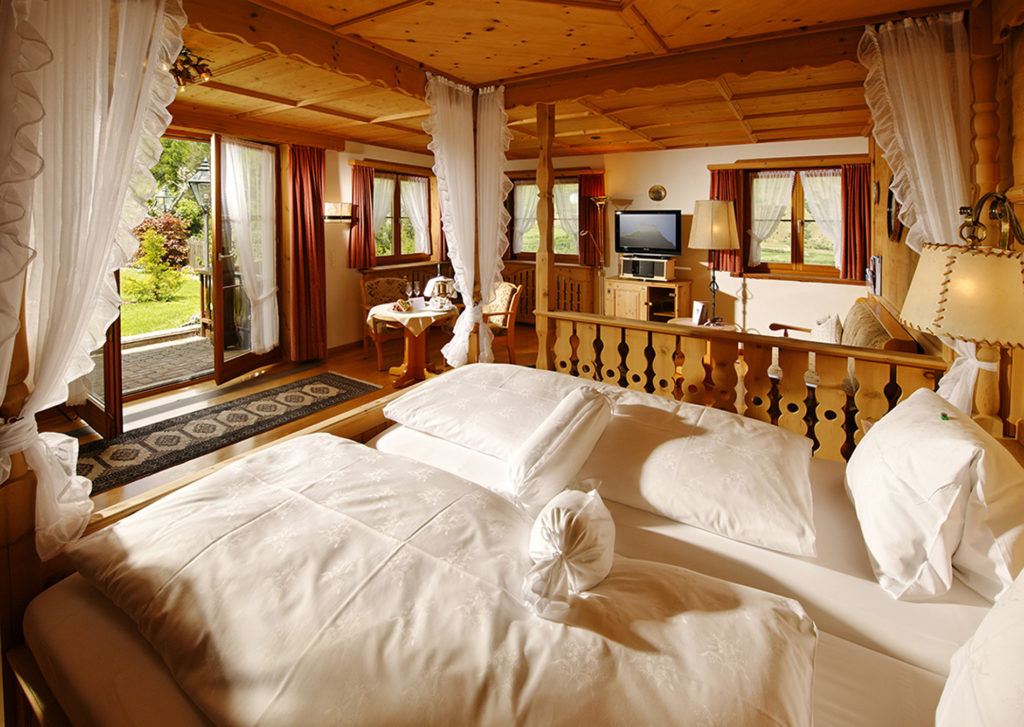
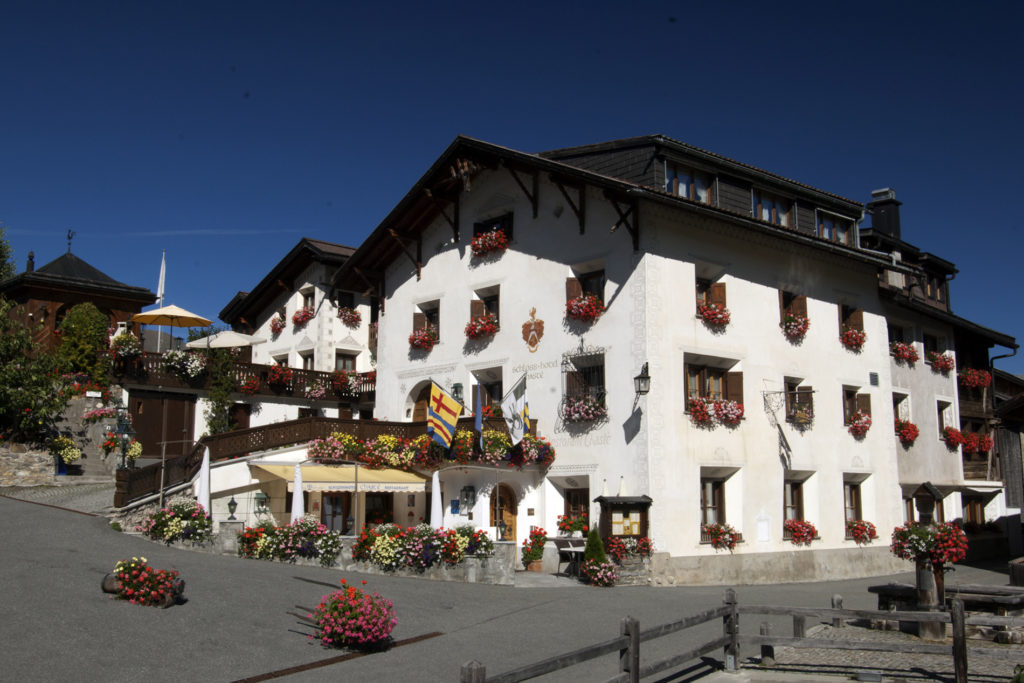
Pinot noir, the king of Graubünden grapes
A winding road now links Scuol, the capital of the Lower Engadine, to Samnaun. Until 1912, the ski resort was cut off from the rest of Switzerland. Swiss citizens had to cross Austria to reach their compatriots. In fact, 65% of the ski area is still on Austrian soil. In this former smuggler’s paradise, Romansh is not spoken, as the priests and teachers came from Austria and spoke a Tyrolean dialect. The Chasa Montana Hotel & Spa can be recognized by its cream-colored turret and houses four swimming pools and seven saunas.
Director Daniel Eisner opens his 20,000-bottle wine cellar to us and introduces us to the canton’s Pinot Noir grape variety, which stretches along the Rhine. Five wine-growing villages provide the backdrop to the best cellars: Jenins, Malons, Zizers, Mainfeld and Fläsch, just two hours from Samnaun. Martin Donatsch’s estate has twice won the title of “World Champion Pinot Noir Producer” at the Mondial du Pinot Noir in 2010 and 2011. An opportunity to open a bottle.
